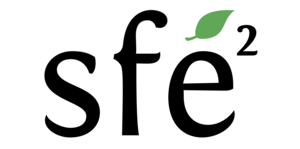The structure of bush Karoo rat lodges: How much work is it to build these castles in a semi-desert of South Africa?
Project summary
The bush Karoo rat (Otomys unisulcatus) is a solitary species that can be observed directly in the field since it is diurnal, lives in an open habitat, and is easily habituated to observers, which is rare in small mammals. We study it in the Succulent Karoo, a semi-desert in South Africa. The Succulent Karoo is an extreme environment with cold moist winters and hot arid summers. Food (providing energy) is superabundant in spring (July-October) but very restricted in summer (December to April). This species builds extensive stick lodges (see photo) up to 1.5m high and 2m in diameter as protection against its harsh environment (Vermeulen and Nel, 1988). These contain a sleeping chamber with a grass nest (Vermeulen and Nel, 1988). One rat occupies 1-4 lodges. The complex stick lodges built by bush Karoo rats are a resource that is expensive to build and maintain. This animal architecture (Laidre 2021) represents an extended phenotype (Woods et al. 2021) which buffers against harsh climate (Plessis, Kerley & Winter 1992). However, while these big lodges have received considerable attention, detailed studies on their structure are missing. So far, only anecdotal information with very low sample sizes is available for this (Vermeulen & Nel 1988). But we need to understand the structure to know on how far it really offers protection against the harsh environment.
The master student will study the internal structure of 12 lodges in detail as well as the external structure of 36 occupied lodges. The student will spend 3 months in South Africa to collect data. In addition, the student will collect soil samples from the studied lodges, which will be analysed after the M2 in a collaborative study. The student will then spend 2 months in Strasbourg for data analysis, writing the thesis, and preparing a scientific publication.
Deconstruction and sampling of 12 lodges: In the dry season of 2025, we will sample 12 currently unoccupied lodges. Population density decreases during the dry season (no reproduction due to food shortage) which is the best period to find unoccupied lodges. This part of the study will allow us to get detailed information on the internal lodge structure, which is anecdotally known (Vermeulen & Nel 1988). Twelve lodges will be deconstructed to (i) determine external structure (entrances, platforms), (ii) measure total mass of plant material used to build the lodge, (iii) estimate number of sticks used, (iv) determine internal structure (sleeping chambers etc). Plant samples will be taken from the base of the lodge for 14C dating. In addition, the student will study the external structure of 36 occupied lodges (12 small, 12 medium and 12 large) on the main field site. The student not will also help in general data collection and maintenance of the research station, as all other students do. Thus, the student will also learn how to trap rodents and how to handle and measure them.
Behavioural observations: The student can also add an aspect with behavioural observations, for example the use of platforms of their lodges for basking.
Work and life at the research station:
https://www.stripedmouse.com/uploads/1/4/3/0/143013892/general_information_research_station_aug_2023.pdf. The student also has to help with the general duties at the research station, such and maintenance and cleaning of the research station. The student will get training and help from the research assistants at the research station. A small group of 3-6 people will be present at the research station.
Time period and place
Data will be collected in South Africa from January to March 2025 for three months. The student should leave France beginning of January. No visa is needed for a period of 3 months. Afterwards the student will write up in Strasbourg. A visit to the collaborating lab in Paris is also possible.
Name of supervisors and laboratories
Dr. Carsten Schradin, IPHC, Strasbourg.
https://www.stripedmouse.com/carsten-schradin.html
Dr. L. Makuya, research manager, Succulent Karoo Research Station.
https://www.stripedmouse.com/lindelani-makuya.html
Collaborators
Prof. Neville Pillay, University of the Witwatersrand, Johannesburg, South Africa.
Dr. Christine Hatte, CEA CNRS UVSQ, Université Paris-Saclay, Laboratoire des Sciences du Climat et de l’Environnement (LSCE).
Contact
Dr. C. Schradin, IPHC Strasbourg, carsten.schradin@iphc.cnrs.fr
Details of where the internship will be carried out: Succulent Karoo Research Station (SKRS) in Goegap Nature Reserve, near Springbok in the Northern Cape of South Africa. https://www.stripedmouse.com/
Costs: The project is funded by https://miti.cnrs.fr/appel-a-projets/suivis-a-long-terme which pays for transport and accommodation at the field station.
Desired skills from student (Compétences souhaitées): Ability to work hard and independently. Good knowledge of English spoken and written. Knowledge in ecology, animal behaviour, experimental design and statistical analysis.
Skills student will learn (Expertises qui seront acquises au cours de la formation): Several techniques of field work (trapping, marking and radio-tracking of small mammals), statistical analysis, presentation of scientific results, improvement of English skills.
Laidre, M. E. 2021. Animal architecture. Current Biology, 31, R1458-R1464.
Plessis, A. d., Kerley, G. I. H. & Winter, P. E. D. 1992. Refuge microclimates of rodents: a surface nesting Otomys unisulcatus and a burrowing Parotomys brantsii. Acta Theriologica, 37, 351-358.
Vermeulen, H. C. & Nel, J. A. J. 1988. The bush Karoo rat Otomys unisulcatus on the Cape West coast. South African Journal of Zoology, 23, 103-111.
Woods, H. A., Pincebourde, S., Dillon, M. E. & Terblanche, J. S. 2021. Extended phenotypes: buffers or amplifiers of climate change? Trends in Ecology & Evolution, 36, 889-898.

Commentaires récents